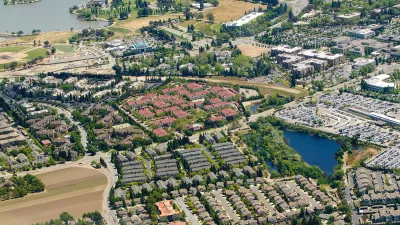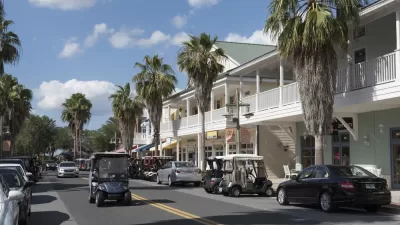The "back to the city" movement of the past decade or so could prove to be the outlier, as Census data shows population growth slowing in the biggest cities while suburban areas lead population growth in more metropolitan areas.

William H. Frey writes:
As we approach the end of the 2010s, the biggest cities in the United States are experiencing slower growth or population losses, according to new census estimates. The combination of city growth declines and higher suburban growth suggests that the “back to the city” trend seen at the beginning of the decade has reversed.
Frey provides plenty of specificity about which large cities are showing slowing growth (e.g., Boston, San Francisco, Dallas) and which large cities are shrinking (e.g., Chicago, New York City, and San Jose). "In some respects, New York epitomizes the reversal from beginning of the decade city magnetism," according to Frey. Large cities showing an uptick in growth are in the vast minority, according to Frey, but they include Sacramento, Tucson, and Henderson.
A consequence of the decline of big city growth, according to Frey, is the return of suburbanization:
In 2011-2012, city growth exceeded suburb growth in 19 of the 34 Sun Belt metros, and in eight of the 19 Snow Belt metros. However, in 2017-18 the city growth advantage appeared in just nine Sun Belt metros and two Snow Belt metros. Among these 11 areas that still registered city growth advantages are: Los Angeles, Washington, D.C., San Francisco, Denver, and Boston.
As for why this return to historic settlement patterns is underway, Frey only offers a very speculative sentence: it's "perhaps propelled by young adult millennials who may be finally departing dense urban cores as they make a delayed entrance into marriage and the housing market."
FULL STORY: Big city growth stalls further, as the suburbs make a comeback

Manufactured Crisis: Losing the Nation’s Largest Source of Unsubsidized Affordable Housing
Manufactured housing communities have long been an affordable housing option for millions of people living in the U.S., but that affordability is disappearing rapidly. How did we get here?

Americans May Be Stuck — But Why?
Americans are moving a lot less than they once did, and that is a problem. While Yoni Applebaum, in his highly-publicized article Stuck, gets the reasons badly wrong, it's still important to ask: why are we moving so much less than before?

Using Old Oil and Gas Wells for Green Energy Storage
Penn State researchers have found that repurposing abandoned oil and gas wells for geothermal-assisted compressed-air energy storage can boost efficiency, reduce environmental risks, and support clean energy and job transitions.

Minneapolis Bans Rent-Setting Software
Four cities have enacted restrictions on algorithmic software that can inflate rent costs.

Oakland to Add 244 New EV Chargers
Oakland plans to launch its new charging network at eight locations by the end of 2025.

Jane Goodall Inspires with Message of Hope, Resilience, and Environmental Action
Speaking in Pasadena, Jane Goodall offered a hopeful and inspirational message, urging global compassion, environmental responsibility, and the power of individual action to shape a better future.
Urban Design for Planners 1: Software Tools
This six-course series explores essential urban design concepts using open source software and equips planners with the tools they need to participate fully in the urban design process.
Planning for Universal Design
Learn the tools for implementing Universal Design in planning regulations.
Heyer Gruel & Associates PA
City of Moreno Valley
Institute for Housing and Urban Development Studies (IHS)
City of Grandview
Harvard GSD Executive Education
Salt Lake City
NYU Wagner Graduate School of Public Service
City of Cambridge, Maryland





























